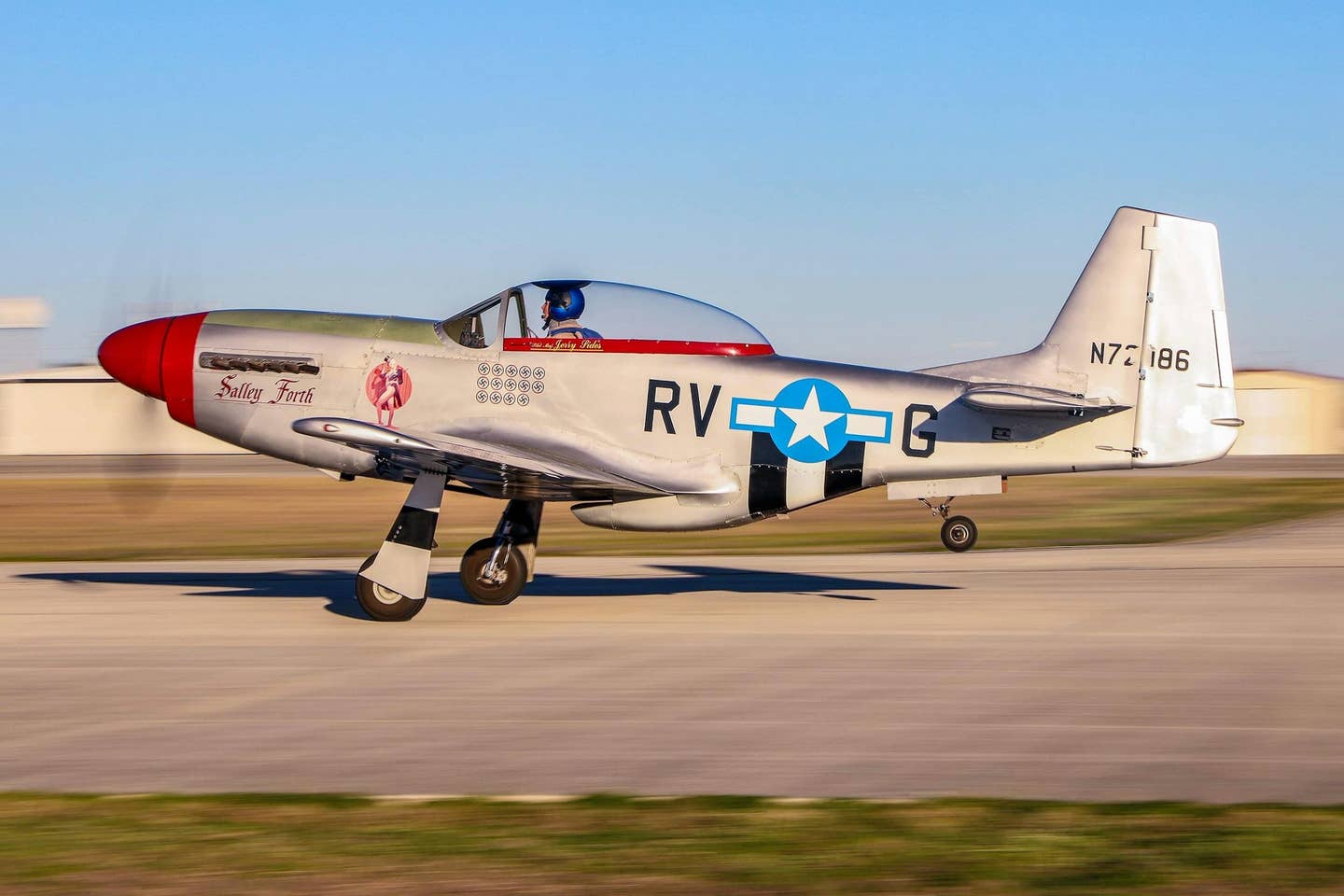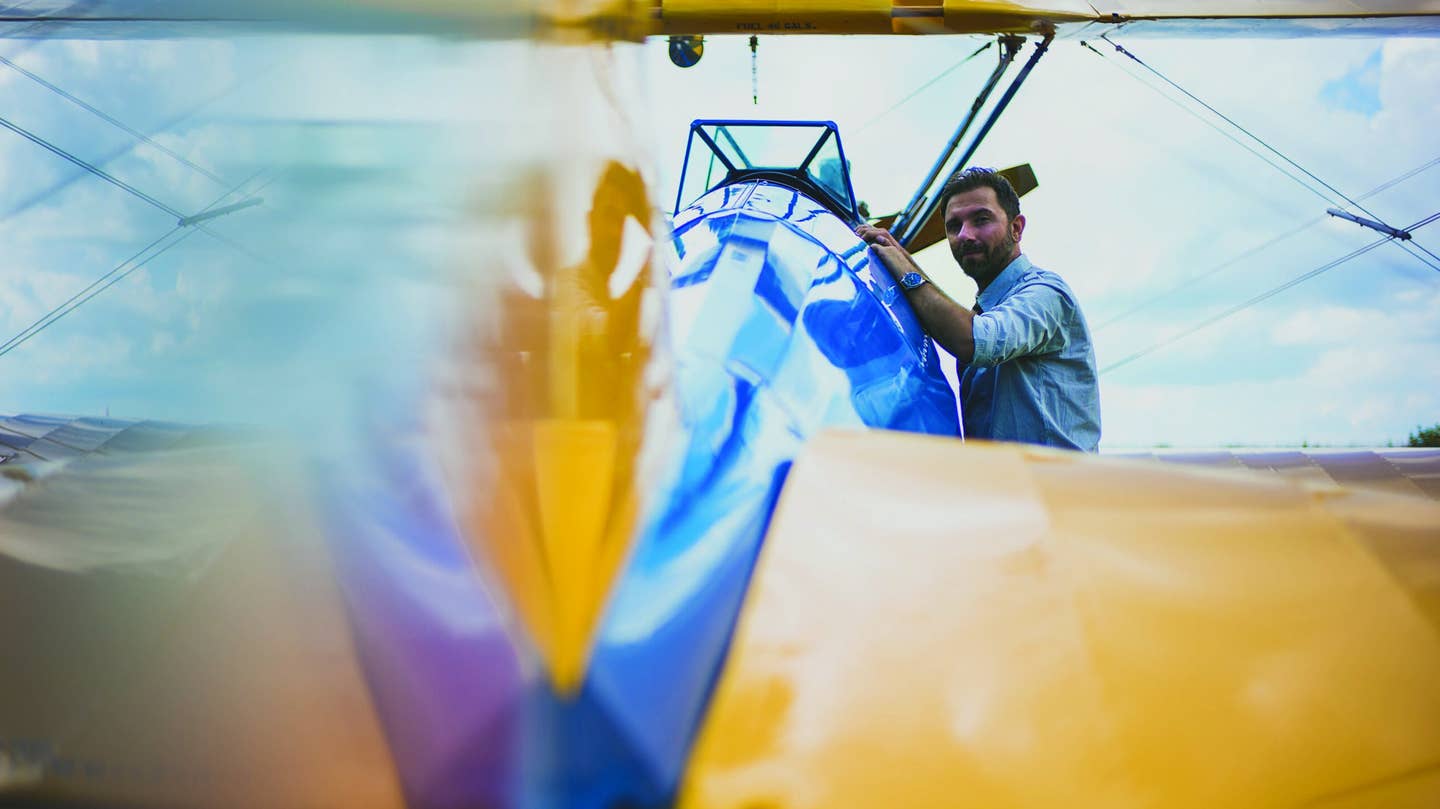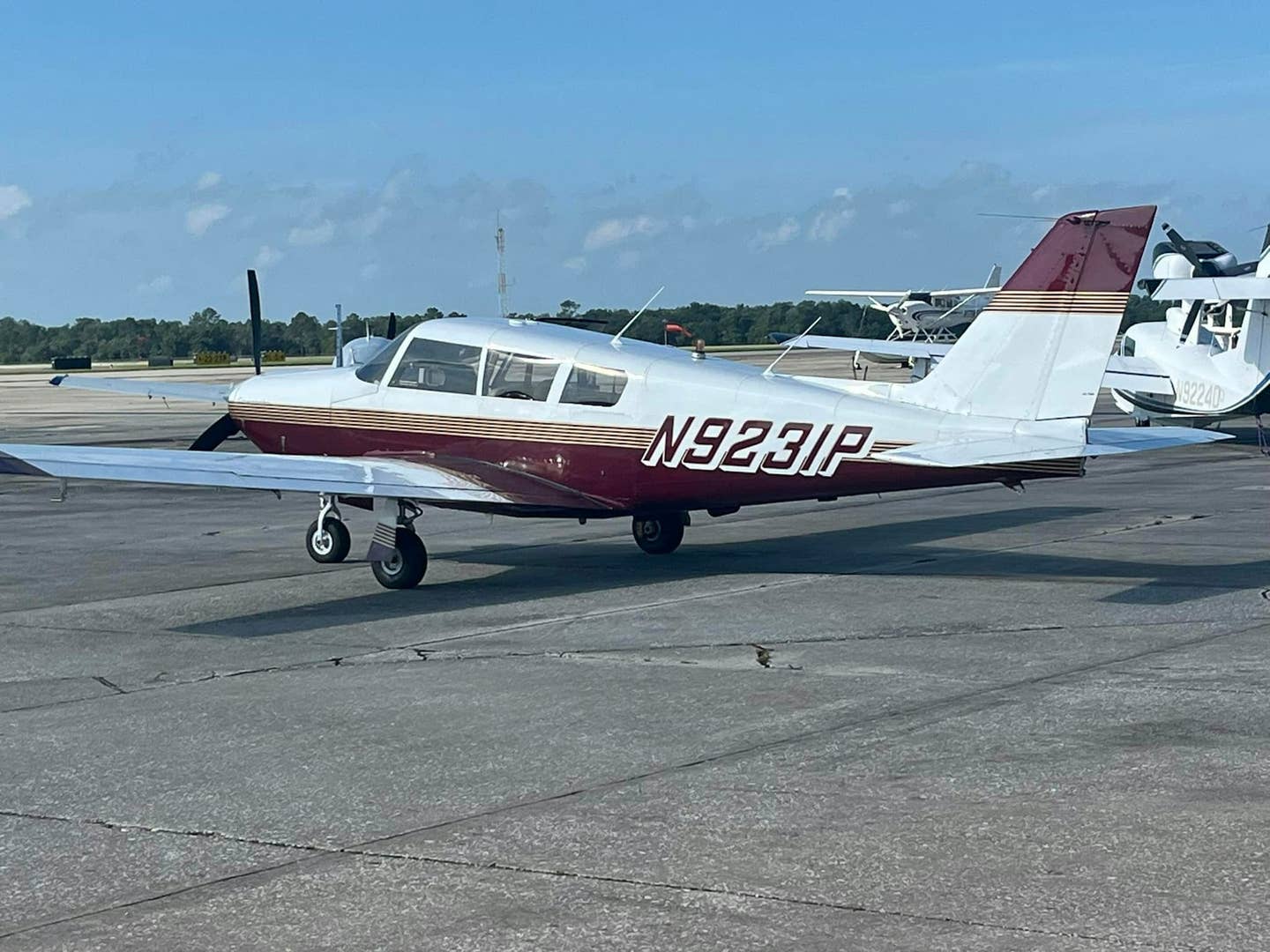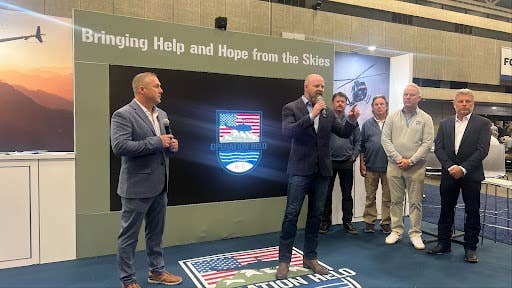
Bell 407GX
Despite the widespread adoption of Garmin’s integrated avionics systems in a variety of airplanes from four-place piston singles to turboprops and business jets, never before has the company’s G1000 glass cockpit flown in a helicopter.
The conventional wisdom has always seemed to argue against shoehorning Garmin’s wide LCD flight displays into the tight confines of a small, Part 27 helicopter. I had to admit as I waited in the parking lot outside Orlando, Florida’s Orange County Convention Center for the arrival of Bell’s newest helicopter, the Model 407GX featuring the helicopter version of G1000, that I harbored those same doubts. Did the pairing of a midrange, light single-engine helicopter with G1000 flat-panel displays, each measuring 10.4 inches diagonally, really make sense? Wouldn’t a slimmed-down alternative — say, Garmin’s G500 avionics system — be a better fit in the 407?
I didn’t have to ponder these questions for long before a gleaming brown-and-gold 407GX swooped over the grass field at the parking lot’s edge and squatted down next to me. I climbed aboard and introduced myself to Randall Parent, a Bell demonstration pilot, who set about giving me a quick and dirty briefing on the G1000H package arrayed before us. (The H stands for helicopter, naturally.) There wasn’t much to say since the magic of G1000 can truly be appreciated only once airborne. But at first glance the pairing of the Garmin glass with the 407 seemed promising.
As we were preparing to depart and get our demo under way, the radio crackled, signaling the arrival of another helicopter, which settled onto the grass beside us. “Have you had a ride in the Bell 429 yet?” Parent asked, glancing over at the 407GX’s larger, pricier sibling nestled next to us. I had not. “It’s nice, but that’s a Cadillac,” he said. “This,” he announced, tightening his grip on the collective, “is a Corvette.”
With that, Parent smoothly lifted us off the ground and into a hover a few feet above the large white H painted on the grass. “There,” he said, pressing a button on his cyclic stick. “How’s that?” A full-color video image showing the view from the rear of the helicopter popped onto the LCD screen in front of me. Easing the cyclic toward him with slight, almost imperceptible pressure, Parent backed the helicopter out of its space.
“That’s a reassuring picture,” I said, impressed by the clarity of the video image, which had far better fidelity than those minivan and SUV rearview cameras I’ve seen.
“That,” he said, “is the kind of technology we’ve incorporated into the 407GX that I’m convinced will save lives.”
Parent stepped on the left pedal to turn as only a helicopter can, pivoting 180 degrees. He eased the cyclic forward and we gathered momentum, wooshing across the empty field outside the site of this year's Heli-Expo Convention. As Parent initiated a brisk climb over the restaurants and tourist attractions along International Drive, I thought to myself, Disney World may be nearby but I was already aboard my own personal amusement park ride.
Accelerating to 140 knots, the 407GX’s impressive top speed, Parent went straight to work showing off the G1000H’s capabilities.
“There’s one of our guys now,” he said, referring to another Bell 407 just returning from a customer demo flight. “I’ll put our nose on him so you can see the traffic alert on the synthetic-vision system.”
Parent banked left toward the small diamond-shaped target that blipped across the MFD. Immediately on the Garmin G1000H primary flight display, a similar target appeared on our virtual view of the world, exactly where it should have been. A digitized voice announced, “Traffic!”
“That’s pretty hard to ignore,” he said.
Indeed it was. In fact, every function and feature of the Garmin avionics system that Parent demonstrated during our half-hour flight seemed perfectly suited to the helicopter. Even the displays themselves appeared to fit the space as if they'd been designed that way when the Bell 407 made its debut back in 1995.
Match Made in Mirabel
I was especially interested to experience the terrain-alerting functionality in G1000, which Garmin originally developed for airplanes and tweaked for helicopter use. Because fixed-wing aircraft typically fly higher and faster than rotorcraft, they must be programmed with a different underlying logic. But here again, the G1000H cockpit excelled in every situation, even as Parent slowed the 407GX and put us into a steeper than normal descent toward a cluster of tall buildings. Had we been flying in an airplane, the system's TAWS would have issued a warning almost as soon as the nose dipped. Instead, we were allowed to continue our plunge until reaching a height and distance where safety could have been in question in low visibility or if a pilot's attention were temporarily diverted. The HTAWS, Parent explained, can be set to three sensitivity levels, including being inhibited altogether with the simple push of a button on the cyclic.
The G1000’s displays are large, to be sure, but it was surprising nonetheless to see how well the screens fit the 407GX’s reshaped instrument panel. Bell certified the original Model 407 with conventional instruments, and will continue selling the helicopter in this configuration to customers who wish to forego making the technological sidestep into the 21st century. Some buyers will opt to stick with round dials in the 407, perhaps owing to the fact that they may already operate a fleet of Bell helicopters and therefore will wish to maintain cross commonality. But if the reaction of buyers at Heli-Expo in March was any indication, the vast majority of customers will choose the Garmin glass panels. Bell said it signed contracts for 11 Bell 407GXs at the show, versus just three for 407s with conventional instruments, and says it has sold another 30 GX models to an unnamed fleet customer.
Possibly the biggest surprise about Bell’s decision to bring a version of the Garmin G1000 avionics system to the 407 is that no other manufacturer had yet chosen to do the same thing. Introduced nearly a decade ago in the Cessna Citation Mustang, Garmin avionics have become a de facto avionics standard in everything from Cessna Skyhawks to Embraer’s Phenom light jets and, with the introduction of the touch-screen-controlled G5000 cockpit, even the superfast Cessna Citation Ten business jet.
It’s a mystery why no other helicopter manufacturer realized G1000 would make a perfect companion for rotorcraft. Credit goes to Bell for being the first to figure it out, and for getting it exactly right in the 407GX.
A Little History
Cessna Aircraft, of course, was the biggest believer in G1000, and some observers predict it could be only a matter of time before the Wichita manufacturer switches to an all-Garmin product line. It's nearly there already with Garmin gear offered in the entire Cessna piston-engine line from the Skycatcher, Skyhawk and Skylane to the newly introduced Corvalis TTx, as well as in the Caravan and the aforementioned Citation Ten. As the story goes, established bizjet avionics manufacturers didn't even bother competing on the Citation Ten cockpit when they got wind of what Garmin was offering Cessna with the G5000 system. Cynics could argue the Citation Ten isn't selling in the same volumes as it did in its heyday, but Garmin's entry into the market for large-cabin, Part 25 business jets was a huge coup for the Olathe, Kansas, company.
Now, with the G1000H avionics coming to the newly renamed Bell 407GX, testing of which was conducted at Bell’s Mirabel production center outside Montreal, Garmin has just scored another major win on which to build its growing product portfolio.
Bell launched development of the Model 407 in 1993 as the company sought to create a helicopter that would sell alongside, and eventually replace, the 206 JetRanger and LongRanger. Designers started with a slightly wider LongRanger fuselage and added the four-blade composite main rotor from the U.S. Army’s OH-58D Kiowa Warrior light attack helicopter. Power came from a single Rolls-Royce 250-C47 turboshaft engine that offered greater horsepower for higher maximum takeoff weight and speed.
The result was a helicopter that boasted speed, payload and range figures similar to those of its closest competitors, namely the European-built Euro-copter EC 130 and AgustaWestland A119. Featuring a roomy cabin that can accommodate five passengers in an open-club seating arrangement, the Bell 407 remains a top choice among emergency medical providers, police, corporate heads and offshore oil operators.
Bell's choice of a Garmin suite for the 407 shouldn't come as a complete surprise considering that it's a sister company of Cessna (both are subsidiaries of Textron). Bell started exploring ways that advanced cockpit technology could be brought to helicopters about four years ago, looking first at what Cessna had done on the fixed-wing side and then at how the technology needed to be adapted to meet the unique operating requirements of rotorcraft.
“In examining the types of accidents helicopter pilots were having, the common thread we saw was that they needed more information in the cockpit, presented in a way that was easily digestible,” said Larry Roberts, senior vice president of commercial sales for Bell Helicopter. “Giving the pilot as much situational awareness as we possibly could was an important factor. When we started looking at the technology that was available, we quickly settled on the G1000 as the answer we sought.”
It took the companies about 18 months from the start of talks to fully define the changes needed in the baseline G1000 system, and then to physically develop the G1000H cockpit, install it and complete certification flight-testing. Bell attained Transport Canada certification for the 407GX in time for the Heli-Expo show and anticipates receiving FAA certification and starting customer deliveries before the end of the year. The base price of the 407 without Garmin G1000H avionics or other extras (what Bell refers to as a base traditional Block A model) is currently $2.645 million. The price rises by $150,000 to $2.795 million for the 407GX model with a standard G1000H cockpit. Included equipment spans the HTAWS, synthetic vision, traffic information system (TIS), tail rotor camera, flight data logging through SD card, power situation indicator (more on that in a moment) and ADS-B in (automatic dependent surveillance – broadcast) technology. Optional gear includes the Garmin GDL 69AH XM Weather and radio receiver, Garmin GDL 59H datalink and flight parameter recorder, emergency locator transmitter and radar altimeter.
The G1000H in the 407GX is offered with single integrated solid-state attitude heading reference system (AHRS), 3-D audio panel with voice recognition technology and an optional Iridium satellite communication transceiver that allows voice calling, text messaging and downlink of weather information and graphics when flying outside XM’s normal coverage area, such as in Alaska. Pilots who’ve flown the 407GX say they love the 3-D voice-activated audio feature because it allows them to select radios and change frequencies without ever taking their hands off the controls, which is a must when hovering. In addition to being able to switch radio by speech, Garmin’s 3-D audio also separates different audio sources and plays them so that they sound as if they are coming from specific locations. For instance, you might hear the tower in your headset on the left side, ATIS on the right and your passengers talking behind you. Even the audio from traffic alerts comes from the direction you’d need to look to spot the target.
Pilots who fly with Garmin’s synthetic-vision technology know just how useful having a virtual view of the world outside can be, especially on a dark night or when flying in reduced visibility. But SVT in the 407GX offers additional benefits unique to rotorcraft. For instance, the synthetic view provides an extra safety margin when flying near terrain and obstacles, which automatically change yellow or red on the PFD depending on their proximity. Pathway guidance boxes included in the technology provide a potentially lifesaving flight-director type function that pilots will appreciate should they inadvertently stray into IMC conditions. (Incidentally, despite all the technology packed inside, the 407GX remains a VFR-only machine.)
Another feature Bell 407GX crews are quickly falling in love with is the innovative power situation indicator on the G1000’s MFD, which lets a pilot keep tabs on a single exceedance needle rather than the three gauges they must constantly monitor in traditional helicopters. Developed jointly by Bell and Garmin, the single-limit engine indicating system constantly monitors Ng (gas producer speed), temperature and torque. At higher altitudes, the first value typically to move toward the limit will be Ng, while on colder days you’re apt to be torque limited. G1000H calculates density altitude and temperature to automatically adjust the airspeed tape as Vne changes. The single power situation needle represents the limits, whether it’s Ng, temperature or torque, allowing the pilot to keep an eye on just the one needle.
“That’s just phenomenal,” said George Mandes, a Bell 407 pilot who recently spent some time at the controls of a GX model and hopes to be one of the first to fly the new helicopter once deliveries start in the fall. “It takes a lot of the workload off the pilot and is an excellent monitoring system that instantaneously tells you when you are close to exceeding a value by flashing yellow and then turning red. I wish all helicopters had this technology.”
Mandes said he too had concerns about the Garmin displays blocking the forward and side view in the 407, especially during off-airport operations, but found that once he sat behind the controls of the 407GX, those concerns quickly vanished.
"I also fly a Caravan with G1000, and it was obvious to me that this wasn't just the Garmin cockpit shoved into a helicopter," he said. "Bell and Garmin have done a nice job designing an avionics system that's really well suited for helicopters. This is the most exciting thing in helicopter avionics I've ever seen."
Time will tell if others agree, but based on my limited time in the 407GX, I think it’s safe to say that Bell has positioned itself at the forefront of the light, single-engine helicopter market with the upgraded model. And while Bell’s self-described Corvette was the first to benefit from the addition of Garmin integrated avionics, it likely won’t be the last in its product lineup.
“I’m glad we approached Garmin,” Roberts said. “It’s a great company, a great partner, and we hope to do additional things with it in the future. At Bell, we’re always looking at ways to improve our products, and you can be sure we’ll be taking a closer look at everything Garmin has to offer.”

Sign-up for newsletters & special offers!
Get the latest FLYING stories & special offers delivered directly to your inbox






